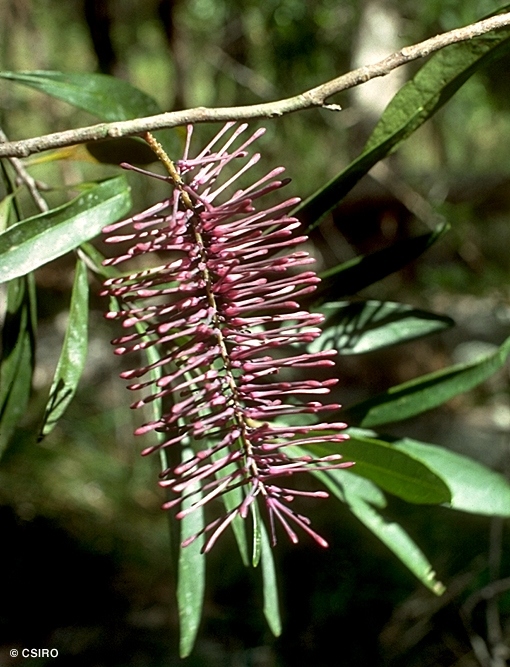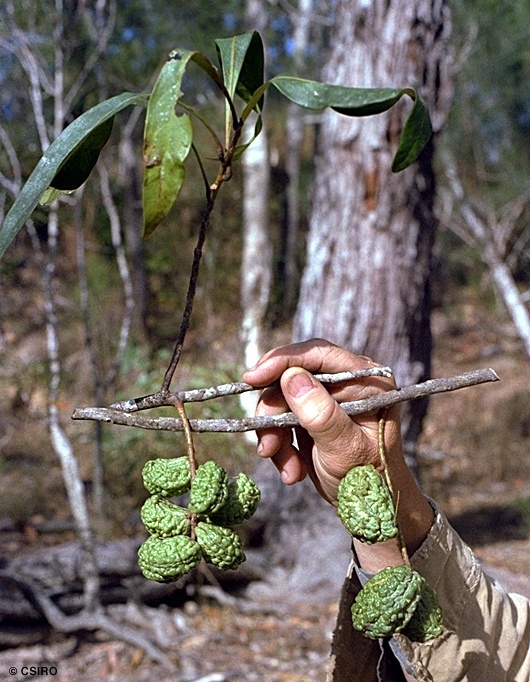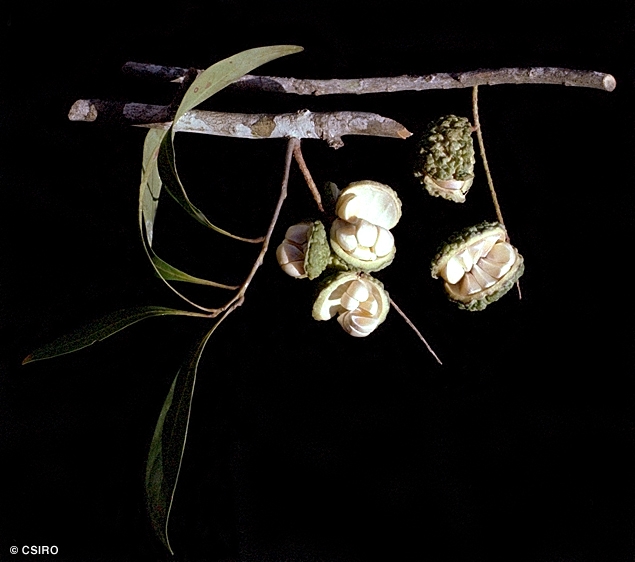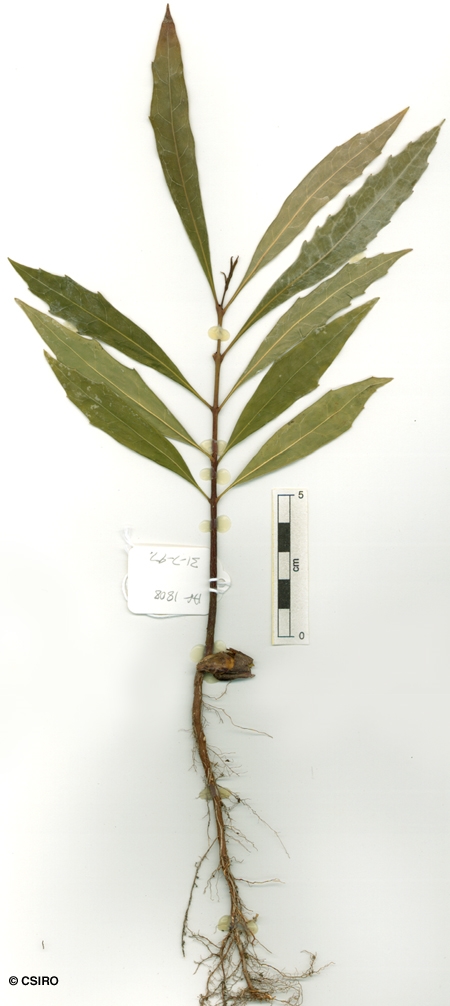Australian Tropical Rainforest Plants - Online edition
Hollandaea riparia B.Hyland








Hyland, B.P.M. (1995) Flora of Australia 16: 499. Type: Queensland, Timber Reserve 165, Baird Logging Area, 16 02S, 145 19E, 22 Sept. 1980, B.P.M.Hyland 10626; holo: QRS.
Roaring Meg Hollandaea; Hollandaea, Roaring Meg
Can grow into a small tree but also flowers and fruits as a shrub.
Oak grain in the twigs. Leaf blades about 11.5-20 x 2.5-4 cm, gradually tapering to the petioles, petioles about 0.8-1.5 cm long. Lateral veins about 5-11 on each side of the midrib, curving and forming loops close to the margin.
Inflorescences about 10-14 cm long. Flowers paired on a short common peduncle, each flower sessile or on a short pedicel up to 2 mm long. Perianth about 20-30 mm long. Anthers about 4-6 mm long with an apical mucro about 0.5 mm long. Anther filaments about 0.3 mm long. Hypogynous glands four. Ovary sessile, ovules 4. Style about 30 mm long.
Fruits about 25-40 x 50 x 20-25 mm, +/- ovoid or hemispherical (or at least flat on one side) surface verrucose. Seeds (2-4 per fruit) globose or angular about 18-20 x 13-15 mm. Testa thin and pale, almost white. Cotyledons thick and fleshy, much larger than the radicle which measures about 2 x 0.6 mm.
First pair of leaves often with about 1-5 teeth on each side. At the tenth leaf stage: leaf blade about 6.5-7 x 1 cm, margin with about 2-5 teeth on each side. Lateral veins about 7 on each side of the midrib. Petiole about 9 mm long. Terminal bud and young twigs clothed in brownish-red medifixed hairs. Seed germination time 37 to 54 days.
Endemic to NEQ, known only from collections made on Roaring Meg Creek. Altitudinal range not known but collected at 300-500 m. Grows as a rheophyte in riparian vegetation and gallery forest.





